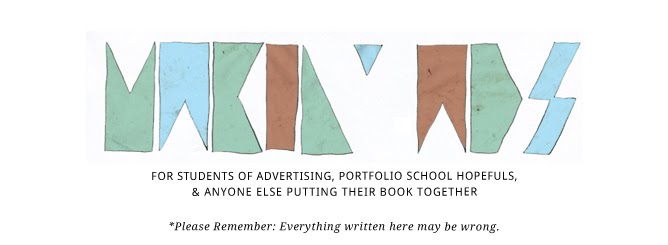This guest post was written by Erin Eby, art director and co-founder of Cocktail, a boutique in Geneva, Switzerland.
When I found myself between jobs, I decided to nurture the "art" side of my "art director.” It was nice to be able to experiment, explore, and be inspired with no boss or client to answer to.
After I accumulated what I thought were some interesting pieces, I realized that I needed a way to share the work, so I started a little Etsy.com store, and I've been pleasantly surprised with the results.
What started as a therapeutic hobby ended up being valuable in more ways than personal satisfaction. I can't believe how many new techniques I learned working on my Etsy pieces that I now apply to client work. I connected with other artists and found myself more in tune with the design community *outside* of advertising. And (as a bonus) it turned out to be lucrative when some prints ended up selling.
The fact is that when people stop doing what they *have* to do and start doing what they *want* to do, great stuff happens. Hobbies are fantastic vehicles for growth, especially when they are focused, deliberate, and involve something that you love. If you're reading this, advertising is probably your number one passion (or is at least pretty high up there), but what else inspires you and sparks creativity in your ads?
For the guys at Red Tettemer it was making gin. For Chicago-based designer John Christenson, it is self-made cheese and bread, ultra-marathons, and these amazing name puzzles, which are currently on my wish list.
Side projects aren't just limited to designers and art fans. My husband, Jack, is a biomedical engineer and general science enthusiast. When he’s not in the lab, he’s scouring innocentive.com for cool challenges to submit his ideas to. He feels that his proposal-writing skills have vastly improved thanks to his submissions.
It doesn't really matter what it is so long as in the end, you would be proud to discuss your experience and feel like you got something out of it.
The best side-projects in terms of being beneficial to your ad career loosely adhere to the below "rules":
- It is *shareable*. You have some kind of documentation that this side-project actually existed. Even better if that documentation tells a story.
- It is somehow *relevant* to your chosen path in the ad industry. Or it’s just mind-blowingly cool and creative.
- Potential for *growth*. Nothing is better than a success story of a passion turned into a phenomenon, so the more scalable your project the better. Try to think about "what's next" for your project so that it can grow along with you and your career.
Happy hobbying!







